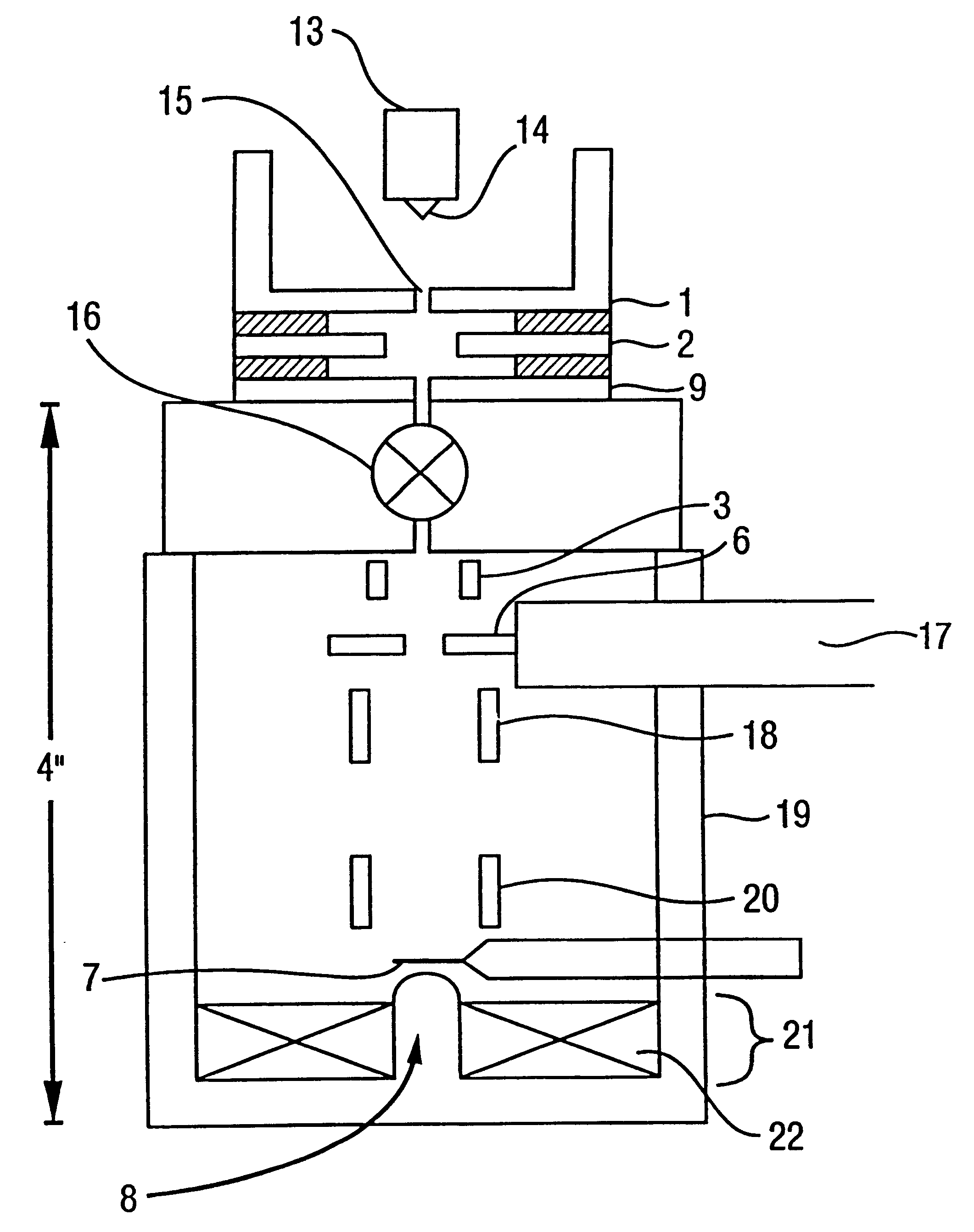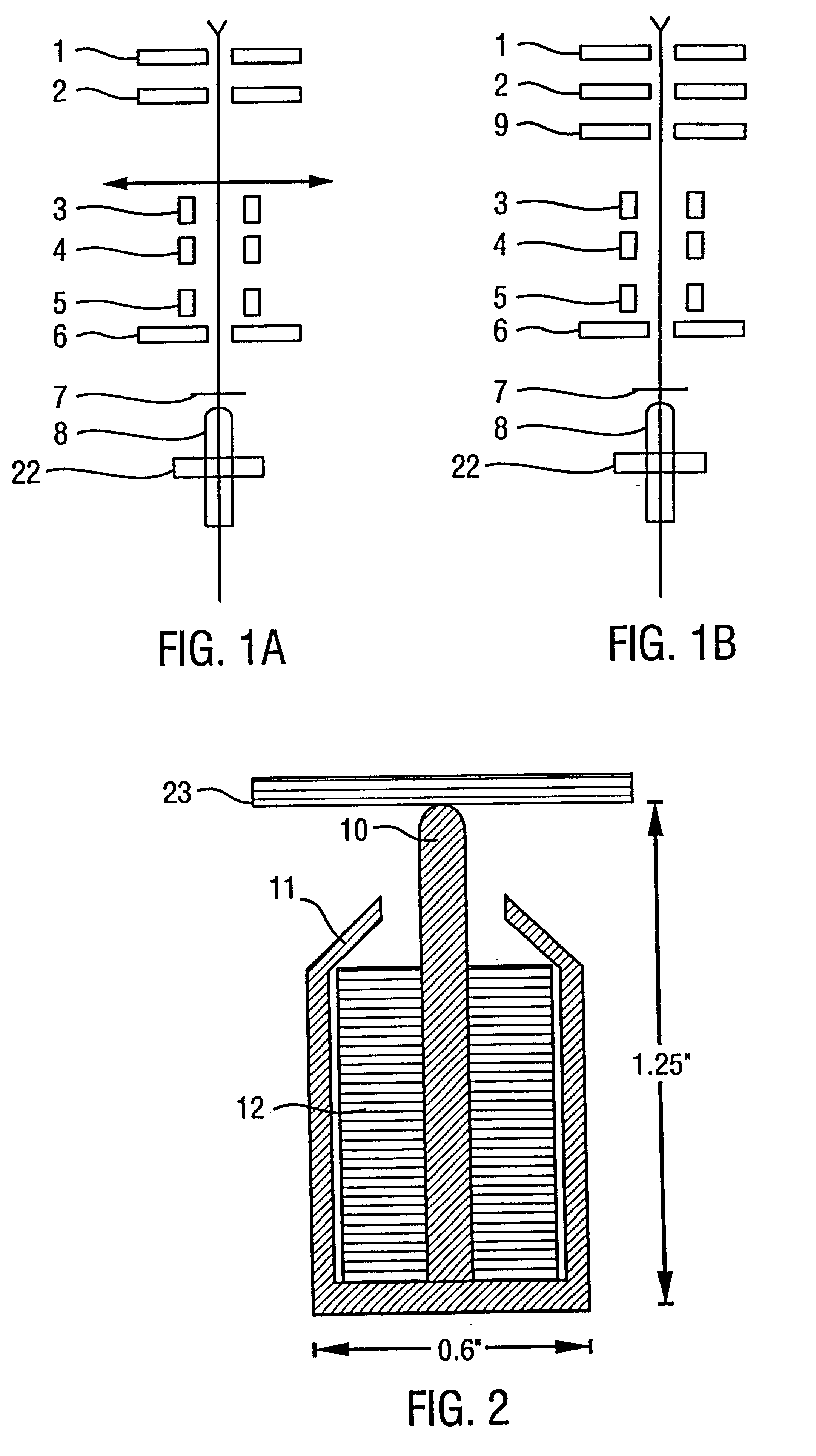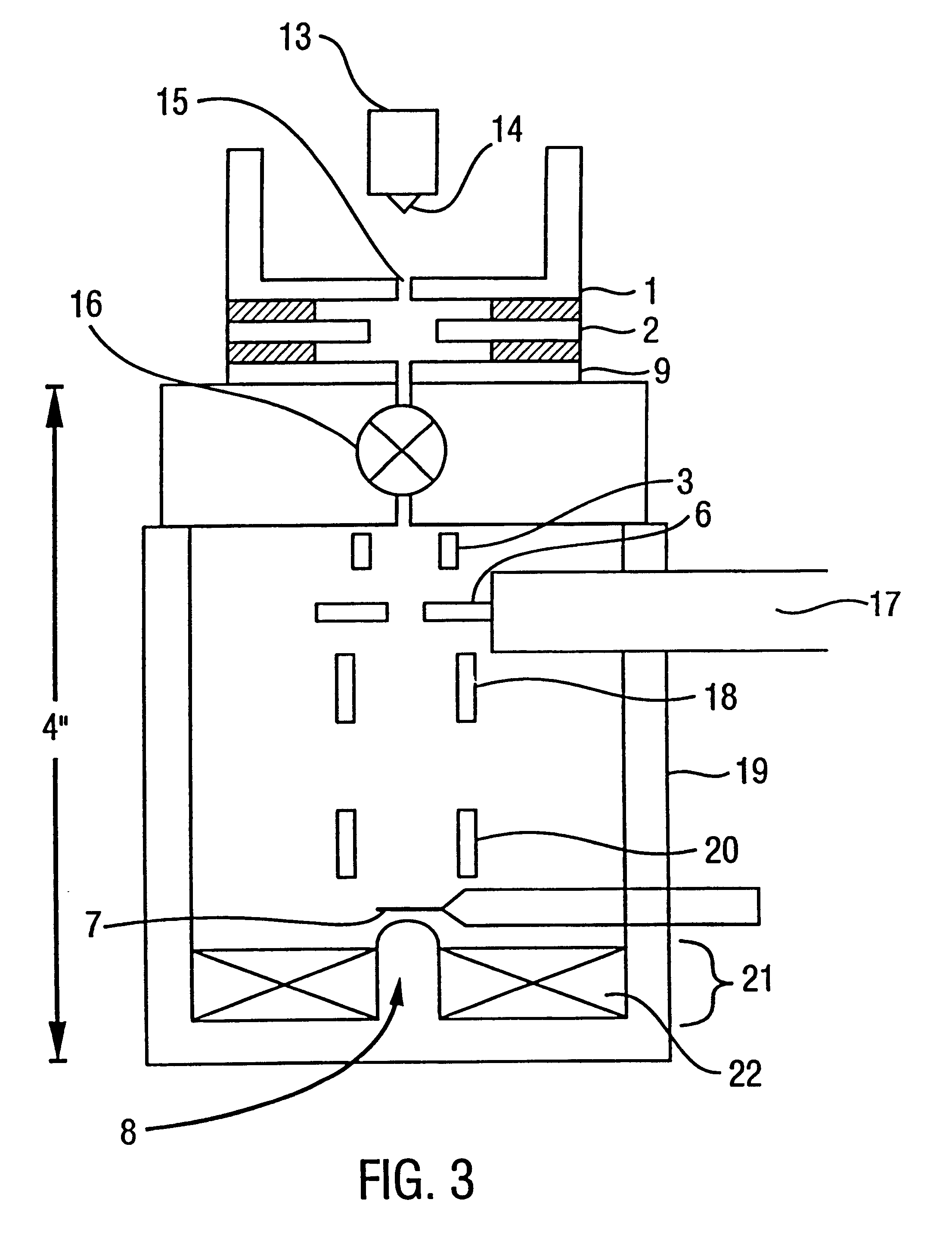Magnetic lens apparatus for use in high-resolution scanning electron microscopes and lithographic processes
a scanning electron microscope and high-resolution technology, applied in the field of magnetic lens apparatus, can solve the problems of somewhat compromised design of dipole lens for transmission microscope, and achieve the effect of facilitating the construction of sem, high resolution, and large angle tilting of specimen stages
- Summary
- Abstract
- Description
- Claims
- Application Information
AI Technical Summary
Benefits of technology
Problems solved by technology
Method used
Image
Examples
example 1
5.1 Example 1
Lens Apparatus Comprising a Solid Pole Piece
The present example concerns the general description of a low-voltage SEM particularly useful in the analysis of biological and other fragile specimens which comprises a magnetic lens apparatus having a solid pole piece.
5.1.1 Schematic View of Solid-Pole Piece Lens Apparatus
Schematic cross-sectional diagrammatic views of the components of either a two anode (FIG. 1A) or three anode (FIG. 1B) illustrate the preferred elements of a SEM employing one of the disclosed lens apparatus. A full-scale view of an SEM employing the lens apparatus of the present invention is shown in FIG. 3.
Referring to FIG. 3, a beam of electrons are produced from the tip 14 of a field emission source 13. Said beam passes through an aperture 15 and is accelerated by a first anode 1, a second anode 2, and optionally a third anode 9. A valve 16 isolates the vacuum of the gun from that of the rest of the column. Concentric with the axis of the beam produced...
example 2
5.2 Example 2
Electron Focusing Using Dipole Lenses
In addition to the lens apparatus of Example 1, having noted that a magnetic dipole made an excellent focusing lens for a low energy electrobeam when placed below the specimen rather than above it, the inventor began to consider additional ways in which such a dipole lens could be fabricated.
This example describes the inventor's demonstration of the electron optics related to the construction of the lens apparatus herein which employ magnetic dipoles, and virtual magnetic monopoles.
5.2.1 Magnetic Field Strength
When one considers a magnetic dipole which produces a magnetic field distribution which is symmetrical about the axis (which the inventor calls the z-axis) the magnitude of the magnetic field strength is given by ##EQU10##
where .mu. is the dipole moment, with dimension Tesla m.sup.3.
If one considers a beam of electrons which is parallel to the axis at infinity and which is incident on the dipole, the focal properties of a dipol...
example 3
5.3 Example 3
Lens Apparatus Comprising a Magnetized Sphere
This example relates to the use of permanent magnets in fabrication of dipole magnetic lens apparatus.
It is quite possible and indeed it is very simple to manufacture a sphere of magnetic material which is permanently magnetized along one diameter. This can be done using material such as AlNiCo.TM. or any of the more modern materials which are commercially available such as the rare-earth magnets of which samarium-cobalt is typical. The fabrication of such materials are well-known to those of skill in the art. They can be made in a variety of forms and it is presumed the manufacturing of them in the form of small spheres is a straightforward matter. With regard to the magnetic field strength which could be obtained in this way, it should be pointed out that a magnetized sphere has a large demagnetization field and therefore the full saturation value of the material cannot be reached. However, calculations indicated that it wa...
PUM
 Login to View More
Login to View More Abstract
Description
Claims
Application Information
 Login to View More
Login to View More - R&D
- Intellectual Property
- Life Sciences
- Materials
- Tech Scout
- Unparalleled Data Quality
- Higher Quality Content
- 60% Fewer Hallucinations
Browse by: Latest US Patents, China's latest patents, Technical Efficacy Thesaurus, Application Domain, Technology Topic, Popular Technical Reports.
© 2025 PatSnap. All rights reserved.Legal|Privacy policy|Modern Slavery Act Transparency Statement|Sitemap|About US| Contact US: help@patsnap.com



